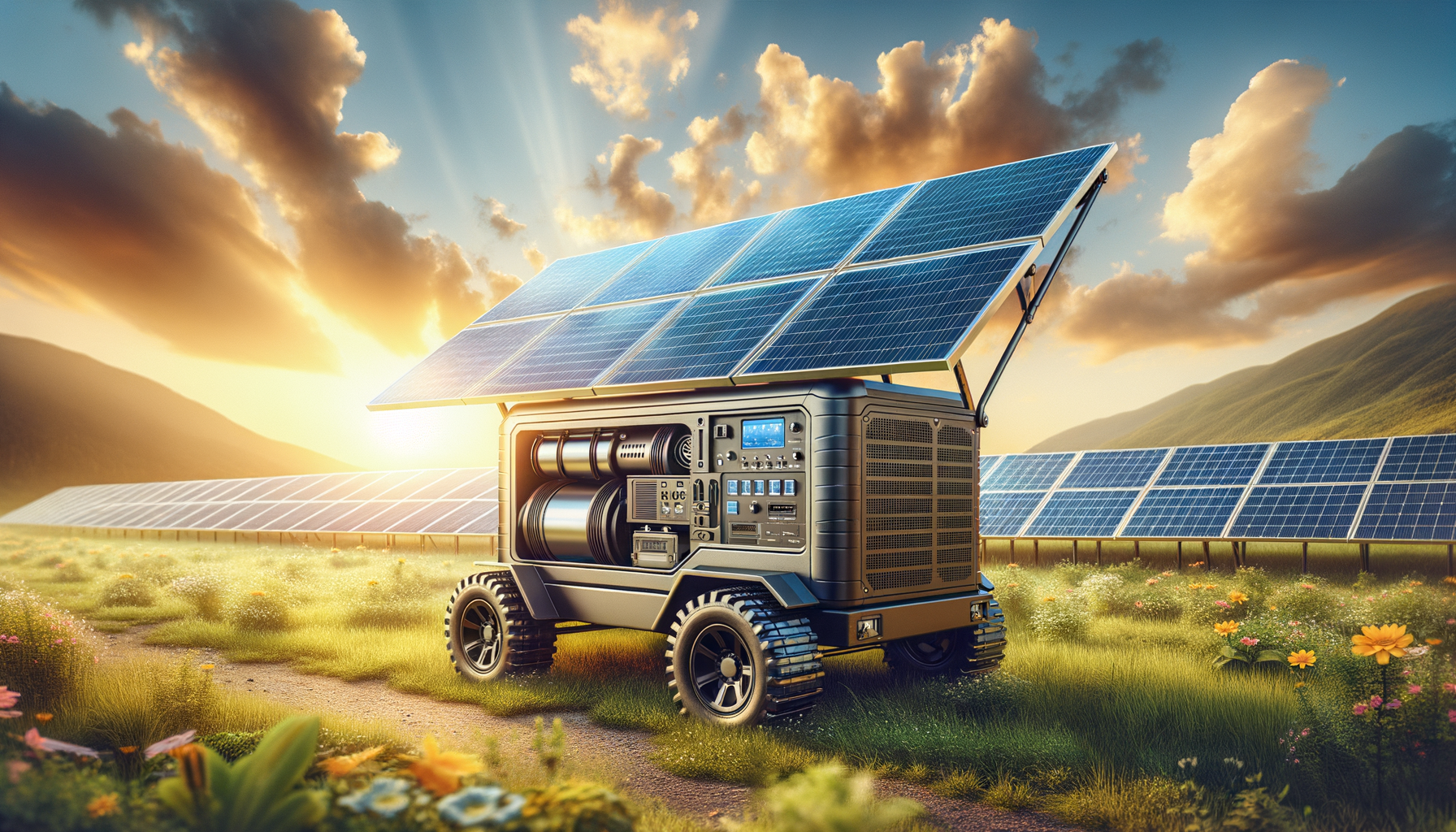Introduction to Portable Power Station Generators
In recent years, the demand for portable power station generators has surged, driven by a growing need for reliable and sustainable energy solutions. These devices offer a versatile and mobile power source for various applications, from camping trips to emergency backup power during outages. Unlike traditional generators that rely on fossil fuels, portable power stations are often powered by rechargeable batteries, which can be replenished using solar panels or other renewable energy sources. This shift not only reduces carbon emissions but also provides a quieter and more environmentally friendly alternative.
Portable power stations are equipped with multiple output ports, including USB, AC, and DC outlets, allowing users to charge a wide range of devices, from smartphones to laptops and even small appliances. This versatility makes them an attractive option for outdoor enthusiasts, as well as individuals seeking a reliable power source for remote work or travel. Additionally, advancements in battery technology have led to increased capacity and efficiency, ensuring that these power stations can meet the demands of modern electronics.
One of the key benefits of portable power station generators is their ease of use. Most models feature intuitive interfaces and are designed for plug-and-play operation, making them accessible to users of all experience levels. Furthermore, their compact and lightweight design enhances portability, allowing users to easily transport them to various locations. As the world continues to embrace renewable energy, portable power station generators represent a significant step towards a more sustainable and self-sufficient future.
The Rise of Solar Power Stations
Solar power stations have gained immense popularity as an eco-friendly solution for generating electricity. These systems harness the sun’s energy through photovoltaic panels, converting sunlight into electrical power. The rise of solar power stations can be attributed to several factors, including increased awareness of climate change, advancements in solar technology, and the declining cost of solar panels.
Solar power stations are not only beneficial for reducing greenhouse gas emissions but also offer economic advantages. By generating electricity from a free and abundant resource, users can significantly lower their utility bills and achieve energy independence. Moreover, many governments offer incentives and tax credits for solar installations, further enhancing their appeal.
Another significant advantage of solar power stations is their scalability. Whether it’s a small residential setup or a large commercial installation, solar power systems can be tailored to meet specific energy needs. This flexibility allows users to expand their systems over time, adding more panels or battery storage as required. As technology continues to evolve, solar power stations are becoming more efficient and affordable, making them a viable option for a wider range of applications.
Exploring Multifunctional Solar Power Solutions
Multifunctional solar power solutions are transforming the way we think about energy generation and consumption. These innovative systems combine various technologies to provide comprehensive energy solutions that cater to diverse needs. By integrating solar panels with battery storage, inverters, and smart management systems, multifunctional solar power solutions offer a holistic approach to energy management.
One of the standout features of multifunctional solar power systems is their ability to provide uninterrupted power supply. During the day, solar panels generate electricity, which can be used directly or stored in batteries for later use. This ensures a continuous power supply, even during periods of low sunlight or at night. Additionally, smart management systems optimize energy usage, directing power where it’s needed most and minimizing waste.
These systems are particularly beneficial for off-grid living, remote locations, and areas prone to power outages. By providing a reliable and sustainable energy source, multifunctional solar power solutions empower users to achieve greater energy independence and reduce their reliance on traditional power grids. As the demand for clean energy continues to grow, these versatile systems are set to play a crucial role in shaping a sustainable future.
Comparing Portable and Multifunctional Solar Power Systems
When considering solar power solutions, it’s essential to understand the differences between portable and multifunctional systems. Portable solar power systems are designed for mobility and convenience, making them ideal for outdoor activities, travel, and temporary setups. These systems typically consist of foldable solar panels and compact battery packs, allowing users to harness solar energy on the go.
In contrast, multifunctional solar power systems are more comprehensive and designed for permanent installations. These systems integrate various components, including solar panels, inverters, and battery storage, to provide a complete energy solution. While they may require a higher initial investment, their scalability and efficiency make them a long-term solution for sustainable energy generation.
Both portable and multifunctional solar power systems offer unique advantages, and the choice between them depends on individual needs and preferences. For those seeking a flexible and mobile energy source, portable systems provide convenience and ease of use. On the other hand, multifunctional systems offer a robust and scalable solution for those looking to achieve energy independence and reduce their carbon footprint.
Conclusion: Embracing Solar Power for a Sustainable Future
As the world continues to grapple with the challenges of climate change and energy security, solar power solutions offer a promising path towards a sustainable future. Both portable and multifunctional solar power systems provide viable alternatives to traditional energy sources, empowering individuals and communities to harness the power of the sun.
By investing in solar technology, users can reduce their environmental impact, lower energy costs, and achieve greater energy independence. As advancements in solar technology continue to drive down costs and improve efficiency, these solutions are becoming increasingly accessible to a broader audience.
Ultimately, embracing solar power is not just about reducing carbon emissions; it’s about creating a more resilient and sustainable energy landscape for future generations. Whether through portable power stations or comprehensive multifunctional systems, the potential of solar energy is vast and transformative, offering a brighter and cleaner future for all.



Leave a Reply